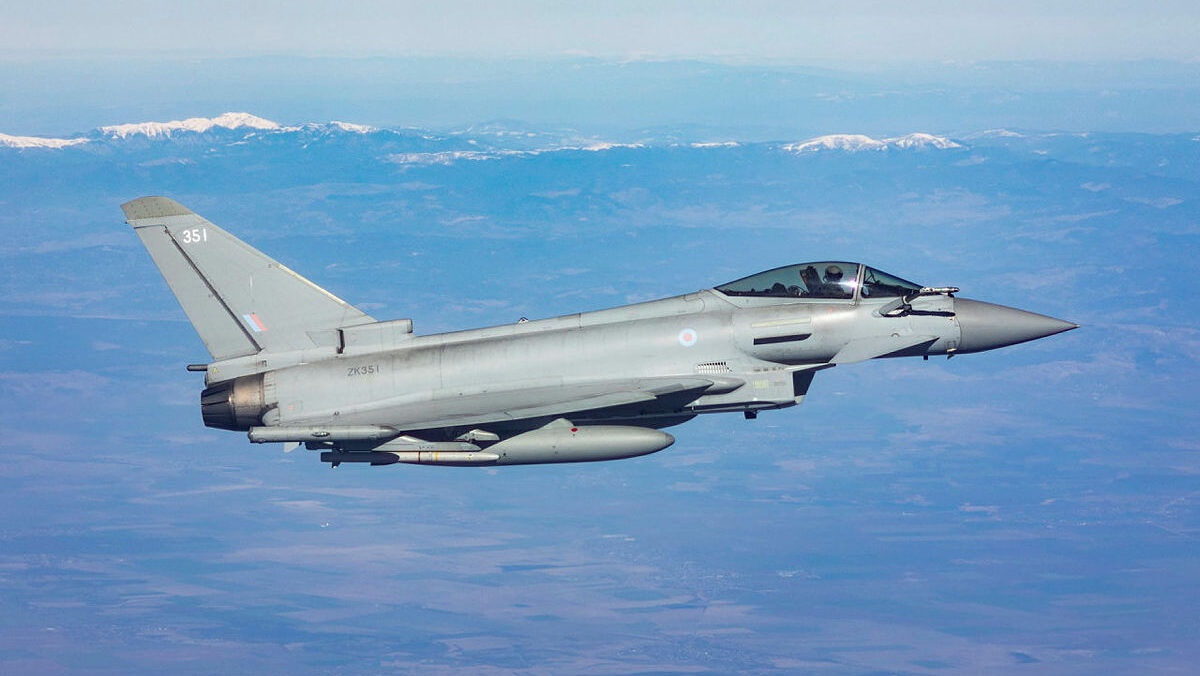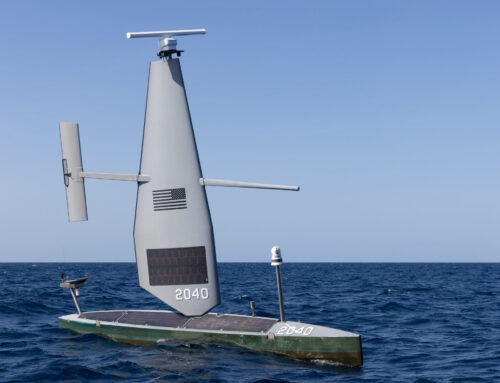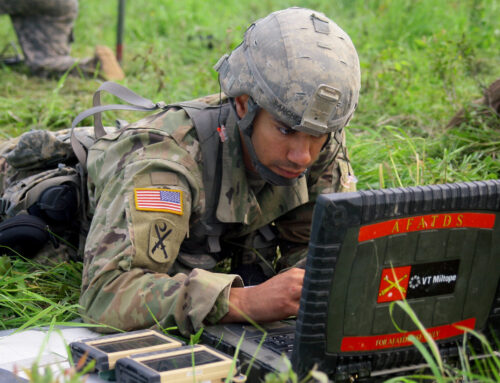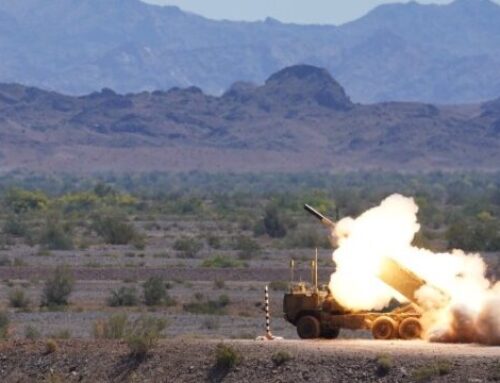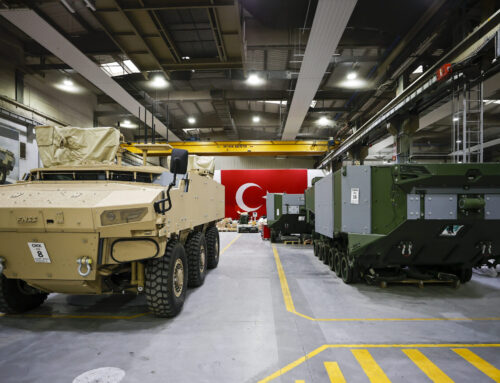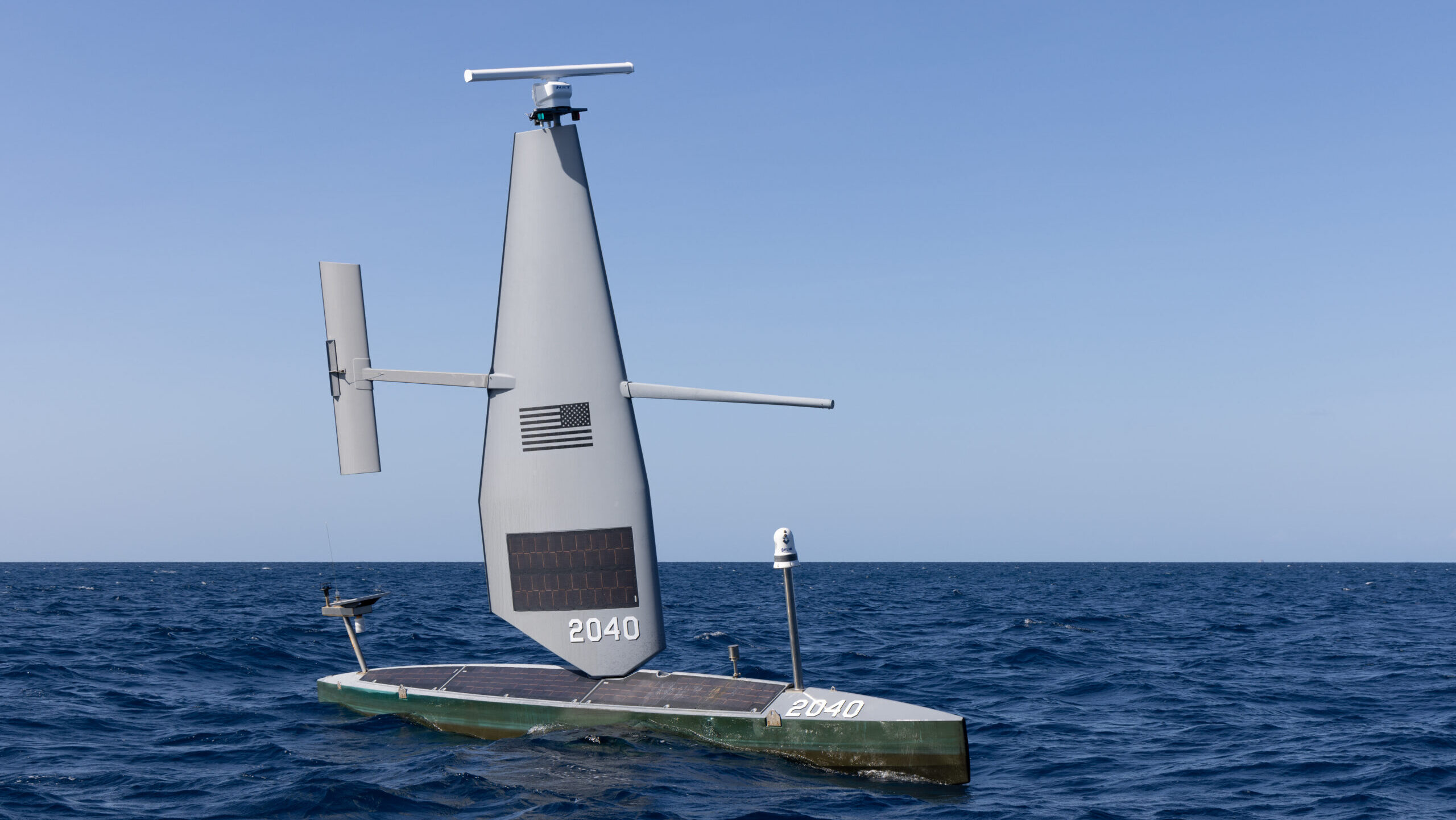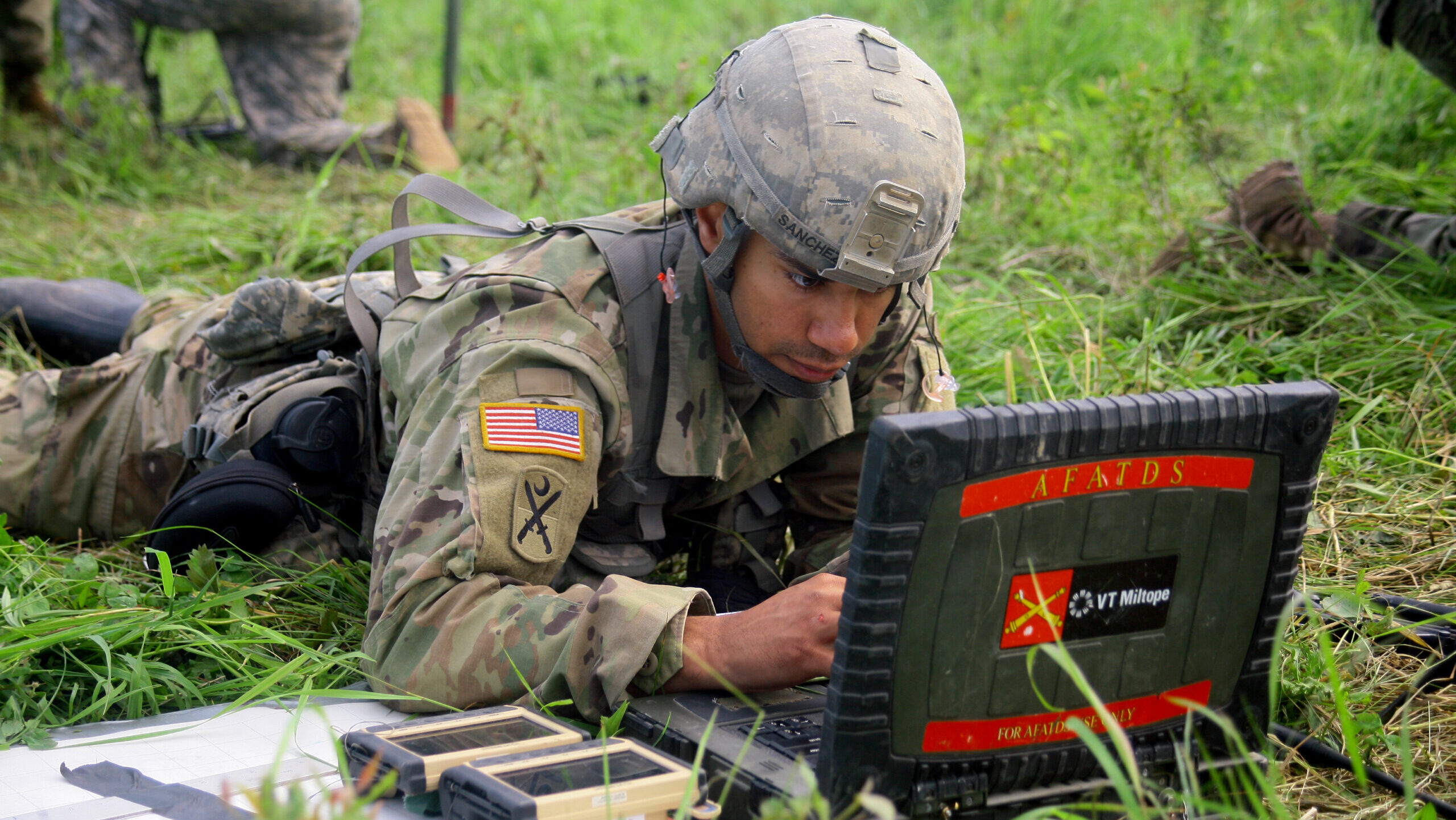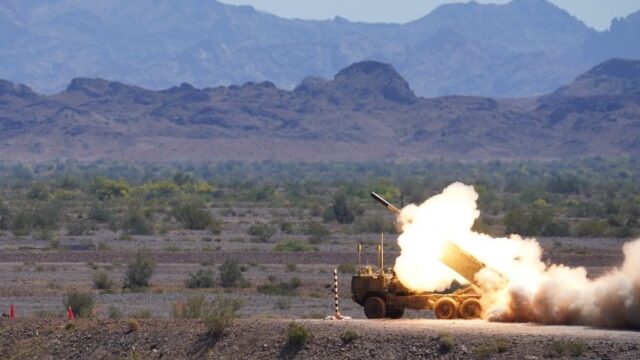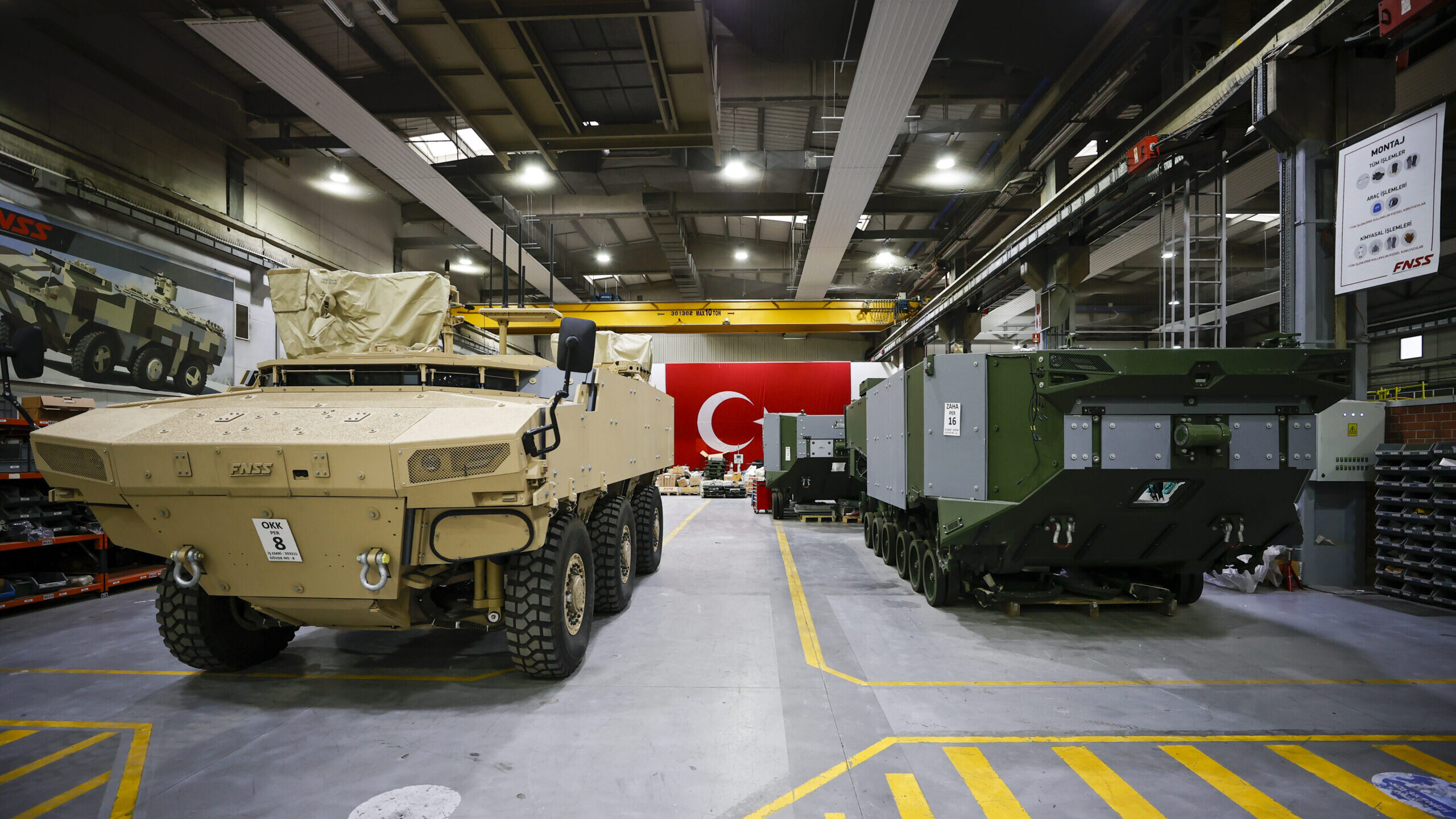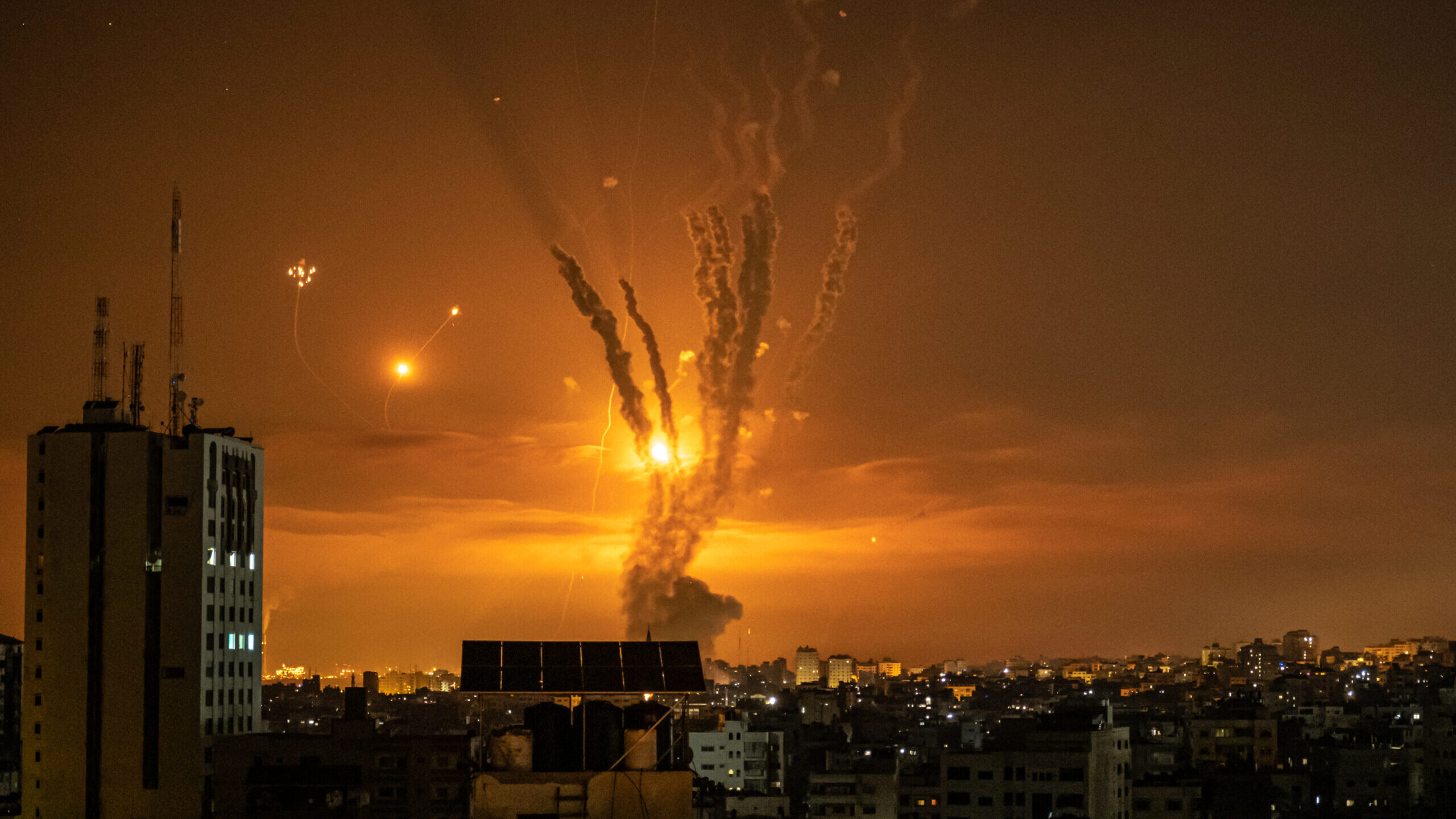A UK Royal Air Force Eurofighter Typhoon conducts a NATO air policing mission (UK MoD)
BELFAST — When the emir of Qatar visits the UK this week, his trip will be watched closely in the city of Preston, located some 250 miles northwest of London.
That’s because Preston is home to the Warton facility of BAE Systems, where final assembly of the Eurofighter Typhoon occurs. And the hope is that Sheikh Tamim bin Hamad Al Thani might use his trip to announce a new order of the fourth-generation jets, a Gulf lifeline that could help save the line from cooling for good.
The Wharton facility is scheduled to produce two final Typhoon airframes by the end of 2025, the last from a previous order from Qatar for 24 jets. But after that, the future of the UK-made Typhoon is unclear.
A spokesperson for BAE Systems was adamant that the British defense giant has no plans to shutter the Wharton facility, saying ““There is absolutely no suggestion of this“ and pointing to potential international orders. Analysts and BAE executives say Qatar, Saudi Arabia and Turkey are all viable options for future orders.
But those “what ifs” appear to be little comfort to Steve McGuinness, a key union figure who kicked off something of a firestorm in England with a letter to lawmakers imploring the British government to invest in the Warton line — not just for the Typhoon program’s own future, but for the future of British advanced fighter production.
“We have serious concerns that without a domestic order for Typhoon there will be no GCAP [Global Combat Air Programme] due to the loss of the skills necessary to build and fly aircraft,” wrote McGuinness, an aerospace and defense executive council member at the Unite trade union.
BAE can keep at least some work at the line going with research and development efforts for future projects, and may redeploy staff currently working at the Warton plant across other parts of the Typhoon business and separate air combat projects run by the company.
But in the end, the best way to keep the Typhoon line up and running, and its workforce employed in the lead up to GCAP, is to sell more Typhoons. And the jet is flying against significant headwinds.
“The world is moving to new generations,” said JJ Gertler, senior analyst at the Teal Group. “The market for Typhoon in recent years has been for countries acquiring them more for diplomatic purposes than performance criteria.”
State Of Play
Following the letter from McGuiness, the Spectator publication, a British conservative leaning publication, ran a piece entitled “The sad death of the Eurofighter Typhoon.” It turned the letter into headline news.
“I think if you were the leadership of BAE Systems you probably wouldn’t have looked favorably on that report coming out from the Unions,” Gary Waterfall, a former UK Royal Air Force air vice-marshal, told Breaking Defense. “It’s a bit prejudging,” on production prospects.
“There remains great interest in Typhoon and we are currently pursuing a number of orders in the Middle East and Europe, in addition to further orders from our European Eurofighter partners – as well publicised in recent press reporting,” the BAE response adds. “Further orders will extend production beyond the latter part of this decade.”
Options for further sales are limited, according to analysts, as the world is largely turning towards more advanced systems than the “4.5 generation” Typhoon.
“A higher degree of stealth has become the cost of entry into almost any fighter market, and you see systems like F-35 supplanting high-end fighters in many cases,” said Gertler. “For some of the missions remaining to Typhoon, like air policing, less complicated and expensive systems can do the same job at a lower acquisition and operating cost.”
The Typhoon is produced by four partner European nations: the UK (BAE), Germany (Airbus), Italy (Leonardo) and Spain (Airbus). Each has its own final assembly line, which puts the last touches on planes destined for their own militaries or for international customers. Whichever manufacturer is the lead campaigner for an export sale is generally awarded final assembly rights; The UK is the lead Eurofighter export nation for campaigns related to Qatar, Turkey, and the Kingdom of Saudi Arabia.
The failure of the UK to commit to a new order of 24 Eurofighter Typhoons is chief among issues raised by McGuiness, alongside reports that London will replace older Eurofighter Typhoon Tranche 1 jets (due to be phased out in 2025) with additional orders of the Lockheed Martin F-35. London last procured the Typhoon in 2009, as part of a joint contract for 112 aircraft, alongside the Eurofighter partner nations. Under the Defence Command Paper of 2021, London cited a need to dispose of of aircraft with “limited utility in the digital and future operating environment” [PDF] as motivation for axing the Tranche 1 jets.
The letter from McGuiness warned against such the F-35 acquisition decision, defining it as “a hammer blow to the British aircraft industry and potentially could end the design, manufacture and assembly of fast jets in this country, seriously damaging our sovereign capability.”
A Royal Saudi Air Force Eurofighter Typhoon arrives at RAF Coningsby, Lincolnshire, England, ahead of Exercise Cobra Warrior (UK Royal Air Force)
Potential For More Typhoon Sales
Despite a lack of domestic interest in more Typhoons and the F-35’s clean sweep of global competitions against Eurofighter in recent years, analysts said that BAE is not wrong in having reason for optimism, thanks to potential sales to the Middle East.
Turkey has said it wants to acquire 40 Eurofighters. Recently Germany, which had been against the deal, offered a “positive response,” to reaching an agreement, according to Turkish Defense Minister Yasar Guler.
In January, Germany also lifted a block on selling to the Saudis, opening the way for a long-delayed second tranche aircraft order (adding to 72 in operation) to take shape. A firm agreement has still to be reached, but could be on the agenda when UK Prime Minister Keir Starmer visits the country next month as part of a Middle East trip that will also include travel to the United Arab Emirates (UAE).
“The Turkey campaign is quite active, and the highest priority,” said Richard Aboulafia, managing director at AeroDynamic Advisory, a consultancy firm. “There’s a good chance it comes through. The same is true for the second Saudi tranche. But Britain is lucky in that its [Typhoon] production line is the most likely to survive the end of the decade,” of all four partner nation final assemblies.
Similarly, it is “not inconceivable” that across the partner nations, Typhoon production could stretch “out to the early to mid” 2030s “given some of the export campaigns that are ongoing,” added Douglas Barrie, senior fellow for military aerospace at the UK-based International Institute for Strategic Studies.
Additionally, the UK has also invested £2.4 billion ($3 billion) in a capability development package for Typhoon, under which BAE has been contracted to deliver an advanced Active Electronically Scanned Array (AESA) radar – European Common Radar System (ECRS) Mk 2.
“These upgrades are also designed to support technology and skills development in readiness for Tempest/GCAP, the next generation combat aircraft,” added the BAE Systems spokesperson.
“Under current plans, Typhoon will remain in service with the RAF until at least 2040 and we are committed to ensuring that this vital capability remains at the cutting-edge of UK and NATO combat air power until its retirement,” said a UK MoD spokesperson.
“Multi decade programmes like the one made at Warton exemplify the UK’s enduring commitment to supporting global defence and security and underpin development of deeper strategic international alliances for the UK,” Kevin Craven, CEO of ADS Group, a UK aerospace and defense trade body, wrote in an email to Breaking Defense. “Our supply chains are resilient, but they are also suffering at the hands of a mixed signal from UK government.”
A Global Combat Air Programme(GCAP) core vehicle concept on display at DSEI, London (Breaking Defense)
GCAP Development
The other reason for optimism at Warton is the importance of GCAP, not just for BAE but for the United Kingdom as a geopolitical calling card. The next-gen program is tied up with Italy and Japan, and, should its Franco-German-Spanish FCAS/SCAF rival fall behind, it could emerge as the non-F-35 jet of choice for the Western world.
Because of GCAP’s importance, there will likely be some production that goes on at Warton even if the Eurofighter falls off.
“When it comes to a bridge between generations, design work is generally more important than production work. This is why the issue of Eurofighter upgrades is [of] equal or greater importance than the survival of the production line,” Aboulafia said.
“Will there have to be some kind of bridge to GCAP? That looks likely. But particularly with the current defense austerity posture in the UK, that bridge does not look very much like a Eurofighter,” Gertler added.
Barrie suggested that Typhoon experimentation with Autonomous Collaborative Platforms (ACP’s), UK terminology for Collaborative Combat Aircraft, could be developed near term.
“There’s obviously ambition to bring ACPs in, in advance of GCAP by quite some time, arguably, by about a decade, really. So you can say there’s going to have to be some tech and R&D around integrating … ACP capabilities with Typhoon,” he said.
The RAF is on course to receive a first “operationally useful” ACP “before the end of the financial year,” said Air Chief Marshal Richard Knighton, RAF Chief of the Air Staff, earlier this month. The UK has not said which ACP it has selected specifically, but it will be a Tier 1 or disposable type. London also expects to operate a “suite” of ACPs by 2030, according to its ACP strategy.
“The sooner you can develop that capability and produce it, the better,” in terms of generating combat mass, Barrie said.


